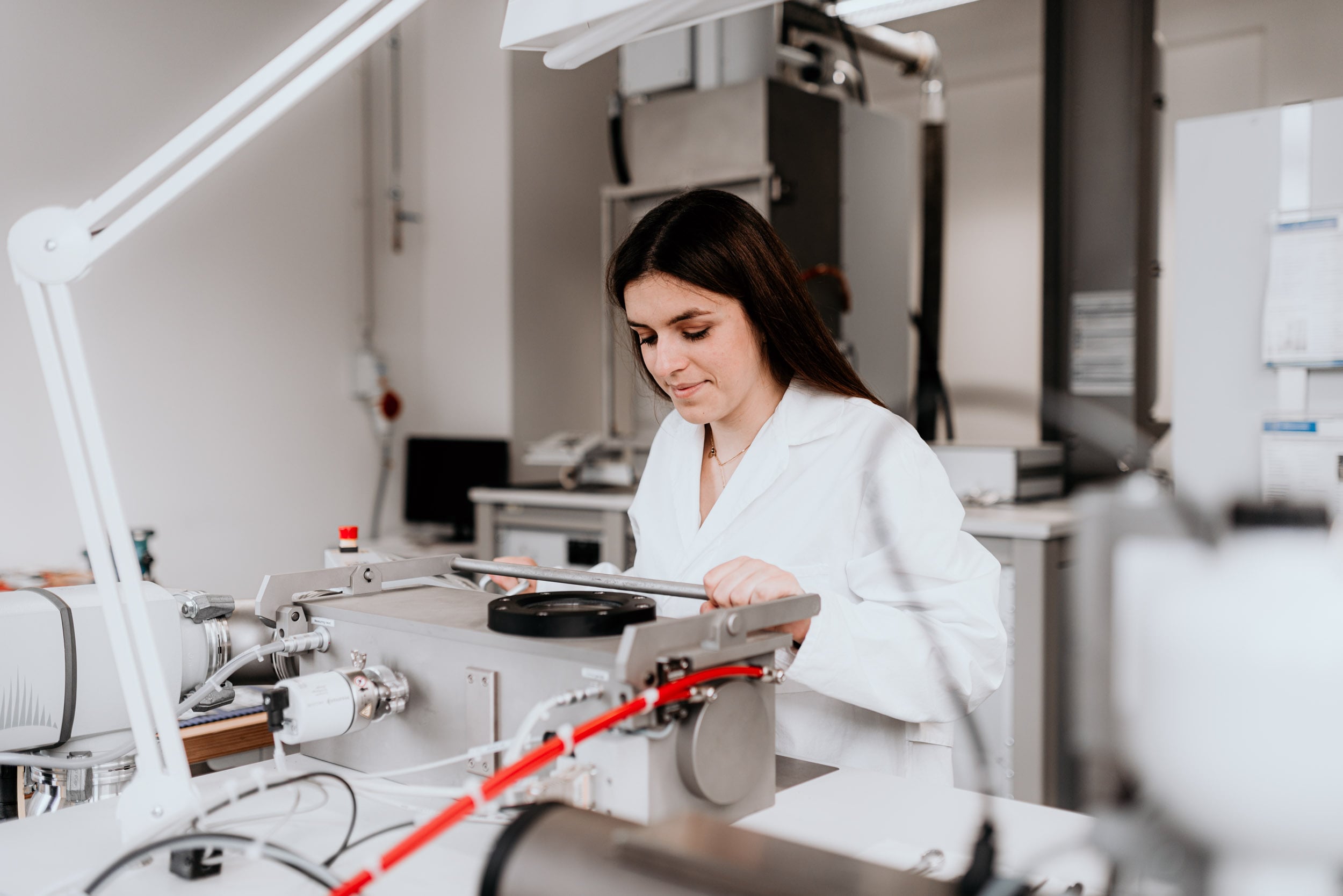Microstructure analyses without bias: Why objectivity counts
Objective microstructure analyses are a key element in ensuring the quality, efficiency and innovative strength of industrial companies. Microstructure analyses enable scientists and engineers to investigate and understand the internal structures of materials. The objectivity of these analyses is of central importance in order to achieve reliable and reproducible results. In this blog post, we explain why objective microstructure analyses are so important and how they contribute to improvements in research and industry.

Navigation
The importance of objective analysis results
Objectivity in microstructure analysis means that the results are not falsified by subjective influences or personal prejudices. Only through objective analysis can reliable and reproducible results be obtained that can be recognised and used in the scientific community and industry. The following points illustrate why objectivity is so important:
| Aspekt | Bedeutung | Vorteile für die Industrie |
| Reproducibility | Results must be consistent regardless of the person carrying out the analysis. | Ensuring consistent product quality Efficient process control Reduction of production errors |
| Comparability | Results must be comparable across different studies and laboratories. | Facilitating global collaboration Quality control in supply chains Coordination of R&D efforts |
| Error avoidance | Minimierung des Risikos von subjektiven Einflüssen und Fehlschlüssen. | Reduction of production errors Preventive maintenance and servicing Avoid safety risks |
| Trustworthiness | Gaining trust through transparent and objective analysis procedures. | Strengthening customer relationships Compliance with legal regulations Building strong partnerships |
| Innovation | Support in the development of new materials and technologies through reliable data. | Reliable data for R&D Accelerating the innovation cycle Differentiation through quality and innovation |
| Competitiveness | Objective analyses as the basis for well-founded decisions and market positioning. | Strengthening the market position Confidence in new technologies Differentiation through quality |
1. Reproducibility for Quality
One of the basic principles of science is the reproducibility of results. If different people use the same methods, they should arrive at the same results. Only through objective analyses can we ensure that our results are consistent regardless of the person carrying out the analysis.
- Consistent product quality
Industrial companies rely on their products being of a consistently high quality. Objective microstructure analyses make it possible to consistently check material properties and ensure that every batch meets the same quality standards.
- Efficient process control
Reproducible analyses enable companies to design and control their production processes more efficiently. If the microstructures of the materials are analysed precisely and objectively, fluctuations in production can be quickly identified and corrected. This leads to fewer rejects, lower costs and overall greater efficiency.
- Reliable research and development
Precise and reproducible analyses are crucial in product development. Companies invest considerable resources in research and development in order to develop new materials and products. Objective and reproducible microstructure analyses ensure that these investments are based on solid and verifiable data. This accelerates the innovation process and reduces the risk of undesirable developments.
2. Comparability
Objective microstructure analyses make it possible to compare results across different laboratories. By standardising and objectifying the analysis methods, we can ensure that the results are comparable and compatible.
- Global cooperation and competitive advantages
Industrial companies operate globally and work with partners and suppliers all over the world. Objective and comparable microstructure analyses are essential to facilitate communication and cooperation between different locations and partners. If all parties involved use the same standardised procedures, they can be sure that the analysed material properties are consistent and comparable.
- Quality control and supply chain management
Comparable microstructure analyses are an important tool for quality control. By using standardised and objective analysis methods, companies can ensure that the materials and products they receive from different suppliers meet the same quality standards. This is particularly important in complex supply chains where materials from different sources are brought together.
- Research and development
Comparable microstructure analyses are also of great importance in research and development. Companies invest considerable resources in the development of new materials and technologies. Objective and comparable analyses make it possible to compare and integrate the results of different research projects.
3. error avoidance and prevention
Subjective influences can lead to errors and incorrect conclusions. For example, certain characteristics can be overlooked or misinterpreted due to bias. Objective analyses minimise the risk of such errors and increase the accuracy of the results.
- Reduction of production errors
The use of standardised and automated analysis methods minimises the risk of human error. Automated systems can analyse material samples quickly and precisely, allowing deviations in material quality to be detected at an early stage. This makes it possible to sort out faulty batches before they are further processed or sold, thus preventing expensive recalls and rework.
- Preventive servicing and maintenance
Preventive maintenance of machines and systems is of great importance in industry. Objective analyses of the microstructure of materials can detect signs of wear or material fatigue at an early stage. This makes it possible to plan and carry out maintenance measures in good time before breakdowns or damage occur. Preventive maintenance can avoid unplanned production stops and extend the service life of machines.
4. credibility through transparency and objectivity
Credibility is of crucial importance. Only through objective and transparent analysis procedures can we gain and maintain the trust of our customers and partners.
- Strengthening customer relationships
Customers not only expect high-quality products from industrial companies, but also transparency and reliability. Objective microstructure analyses enable companies to clearly demonstrate the quality and properties of their materials and products. This transparency creates trust and strengthens customer relationships. Customers who can rely on the accuracy and reliability of the products supplied remain loyal to the company and are more willing to enter into long-term business relationships.
- Partnerships and co-operations
In many industries, co-operation and partnerships are crucial to success. Companies work together with suppliers, research institutes and other partners to develop innovative products and technologies. Objective and transparent analyses are the basis for trusting cooperation. They enable all parties involved to access reliable data and make well-founded decisions. This promotes co-operation and facilitates the joint achievement of goals.
- Compliance with legal regulations
Industrial companies have to comply with a large number of legal regulations and standards. Objective analyses are essential to prove compliance with these requirements. Regulatory authorities often require detailed proof of material properties and production processes. Transparent and objective analyses enable companies to provide the necessary evidence and thus ensure market access.
5. Innovation
Innovative products and technologies are key to competitiveness. Companies that develop new materials and processes must demonstrate their benefits and safety, because customers and partners who can understand the reliability and safety of the innovations are more willing to accept and support them.
- Improving product development
Accurate and reliable data is crucial in product development. Objective microstructure analyses provide this data and thus support the development of new materials and technologies. By avoiding errors in the analysis phase, researchers can ensure that their developments are based on solid foundations and reach market maturity more quickly.
- Accelerated innovation cycle
Error-free analyses promote the innovative strength of companies. They make it possible to test and validate new materials and processes safely and efficiently. This accelerates the innovation cycle and helps companies to differentiate themselves in the market with innovative products and technologies.
6. Competitiveness through precision
In a highly competitive market, companies can differentiate themselves through the quality of their products. Objective and transparent analyses help to prove the high quality of the products and emphasise them against competitors. This creates a clear competitive advantage and enables companies to position themselves as trustworthy and reliable suppliers.
- Optimizing ressources
Objective analyses enable more precise control of material properties and production parameters. This leads to better use of resources, as materials can be used in a more targeted manner and production processes can be optimised. More efficient resource utilisation not only helps to reduce costs, but also contributes to sustainability and the conservation of natural resources.
- Crisis management
Transparent communication is crucial in the event of quality problems or recalls. Companies that carry out objective and comprehensible analyses can quickly identify problems and take appropriate measures. This minimises damage and maintains the trust of customers and partners. Transparent and proactive communication strengthens credibility even in crisis situations.
Conclusion
Objective microstructure analyses are of crucial importance for materials science and industry. They ensure the reproducibility, comparability and credibility of the results and help to avoid errors and erroneous conclusions.
The use of automated methods for microstructure evaluation ensures the objectivity of the analyses and thus makes an important contribution to scientific and industrial development.
